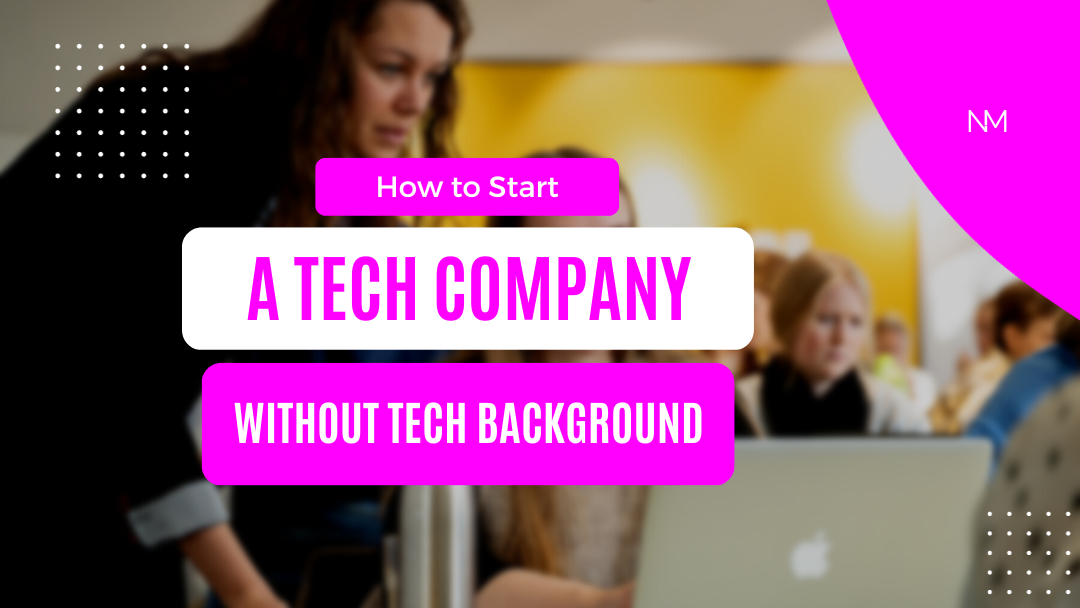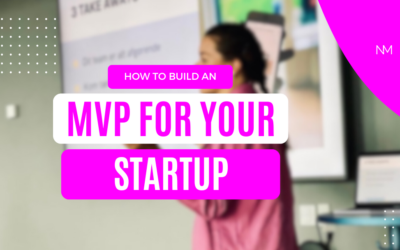Embarking on the journey of starting a company demands a diverse skill set, with basic tech skills being a crucial component. While coding your own website isn’t mandatory, a foundational understanding of navigating and utilizing software systems is essential. Many successful tech founders have proven that a tech background is not a prerequisite. Whether you collaborate with tech experts or conduct thorough research, I’m here to share fundamental terminologies and tips to guide you as you venture into starting a tech company without tech background.
The Importance of Basic Tech Skills
Navigating the realms of tech is a must, from setting up your startup to invoicing your customers. As a founder since 2014, I share a common ground with many, having embarked on this journey without a tech background, just like you. Back when I was diving into construction engineering studies, I simultaneously launched my first venture – a creative enterprise crafting handmade bags sold at craft fairs and on my webshop. Despite the artistic nature of my business, it demanded a slew of new skills, from building a Shopify website and managing social media accounts to creating visuals in Canva and handling bookkeeping in Dinero, among other essentials. See my favorite tools here.
You can of course pay others to take care of all this, but in the beginning of creating a company it may not be possible. But if I could learn it so can you!
However, it’s crucial to acknowledge the distinction between initiating a creative company and embarking on a tech-focused venture. When technology takes center stage in your startup, basic tech skills are just the tip of the iceberg; a comprehensive technological understanding of your specific field becomes imperative. Take, for instance, launching a company in the realm of Artificial Intelligence. While you may not need to be a field expert, a fundamental understanding of AI is essential to harness its full potential.
This principle holds true for starting a Software as a Service (SaaS) startup as well. While you may not be expected to code the entire software system, you must possess enough tech proficiency to make informed decisions. This involves selecting the most suitable software, choosing an appropriate tech stack, and hiring skilled technical employees. In essence, even in the tech world, the foundation lies in having basic tech skills, which is laying the groundwork for informed decision-making and successful entrepreneurship.
Basic Tech Terms for starting a Tech company
When I dove into the tech world with my first startup in 2018, I was a total newbie. I won’t lie – the learning curve was steep, and I tripped over a few tech hurdles. However, the lessons I’ve learned can now benefit you as you embark on the path of starting a Tech company without Tech background. Check out these 7 essential Tech terms that you need to know as you get started.
What is a Tech Stack?
An example of a basic tech stack:
Frontend: Angular
Backend: Node.js
Database: Firebase
What is Tech specifications?
If you lack coding skills, connecting with experts is vital to bring your service to life. To ensure a successful collaboration, having a detailed tech specification is key. This document outlines the service’s purpose and its delivery requirements, encompassing both long-term goals and short-term milestones like the Minimal Viable Product (MVP). Tech specifications are invaluable for seeking advice on the tech stack, estimating timelines, and gauging costs. Although it may seem overwhelming initially, starting with what you know and gaining insights in each meeting will enhance your understanding.
What is a Frontend?
Consider the frontend as the visible part of software, such as a website with interactive buttons or an app displaying the latest news—what your customers directly engage with. When selecting a frontend, it’s crucial to tailor it to your use case. Ask yourself: Will your customers interact with the service on computers, mobiles, or both?
Here are some of my preferred frameworks:
- Angular or React – Ideal for web applications.
- Flutter – A cross-platform framework enabling applications on App Store, Google Play, and as standard websites with a single codebase.
- NoCode tools – Platforms like Bubble allow frontend creation without coding skills.
- WordPress/Shopify – Suitable for basic websites, including blogs or webshops.
Each framework has its pros and cons, but aligning your choice with your tech specifications will help you find the best fit for your needs.
What is a Backend?
Picture the backend as the intermediary, providing the frontend with the necessary information to showcase the latest news. The frontend requests, ‘Give me the 10 latest news,’ and the backend interacts with the database to retrieve and deliver 10 news articles, complete with details like images, content, and dates. This enables the frontend to present the information in a visually appealing manner.
When it comes to backend development, there’s a plethora of frameworks and languages to choose from, often influenced by developers’ preferences. Here are two of my favorite backend frameworks:
-
Google’s Firebase Functions – An excellent choice, especially if you opt for Firebase as your database. It supports multiple coding languages, including Typescript and Python.
-
Node.js – Frequently used in conjunction with Typescript, Node.js pairs well with databases like MongoDB for robust backend development.
What is a Database?
A database is the place where all your data is stored. While an Excel sheet can serve as a basic database, its scalability is limited. For simple NoCode applications used internally, I often employ Google Sheets as my database. However, when scalability is a priority, careful consideration of data structure is crucial for easy retrieval.
One of my preferred databases is Firestore:
Firestore Database is known for its low learning curve and visual interface, making it user-friendly even for non-technical individuals to modify data.
Cloud Firestore is a NoSQL, document-oriented database. Unlike a SQL database, there are no tables or rows. Instead, you store data in documents, which are organized into collections. Each document contains a set of key-value pairs.
What is a Framework?
A framework is a structure that some smart developers have made, so you don’t need to set up the basics like routing, importing packages, and so on. You choose a framework based on your needs.
Angular is a framework where you code in HTML, CSS, and Typescript, and it’s good for web applications. A similar framework is React which was created by Facebook’s developers.
I also like the Framework Flutter which can be used to build cross-platform applications (iOS, Android, and web). In Flutter you use the coding language called Dart.
When you are new to coding you learn Typescript or HTML, but when you develop a real application you use a framework.
What does a Full-Stack developer mean?
A Full-stack developer has the ability to code the entire technology stack, covering both the frontend and backend aspects of a software application. However, it’s important to note that being ‘full stack’ doesn’t automatically align with your specific tech stack needs. When initiating your search for a developer, focus on finding expertise in the coding languages or frameworks relevant to your intended tech stack.
I trust this guide has given you valuable insights into what it really takes to kickstart a tech company without a tech background. The journey may seem challenging, but rest assured, it’s entirely doable – you might even find yourself coding your own software! For a deeper dive into my personal journey, from starting a tech company without a tech background to a CTO and full-stack developer, explore more on my blog at femaletechentrepreneur.com. Let’s keep the tech journey alive and thriving!



